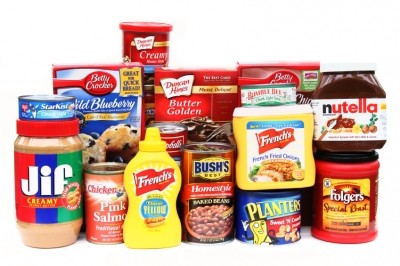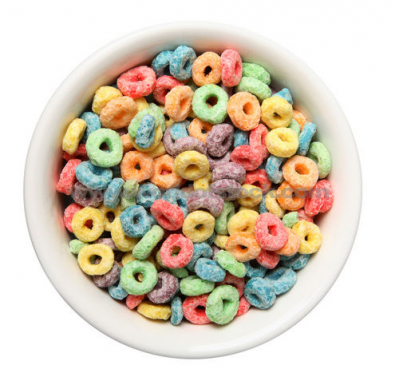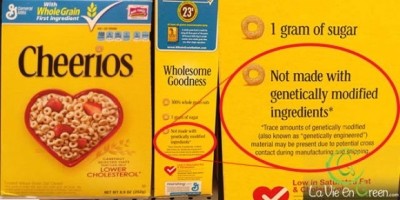EWG’s Food Scores database goes beyond Nutrition Facts to rank foods’ health value

But the Grocery Manufacturers Association fears the database and smart phone ap are “severely flawed, and will only provide consumers with misinformation about the food and beverage products they trust and enjoy.”
The user-friendly Food Scores: Rate Your Plate database rates 80,000 whole and packaged foods on a scale of one to 10, with one being the healthiest, based on the products’ nutritional value, ingredients and level of processing. It also includes more than 5,000 ingredients and 1,500 brands.
“EWG’s product profiles include highly detailed information on how each food stacks up in terms of nutritional content and whether they contain questionable additives, such as nitrates or potassium bromate, or harmful contaminants, such as arsenic and mercury, and which foods have the lowest and highest processing concerns,” the group says in an Oct. 27 release announcing the launch.
Consumers can easily drill down in the database by searching general food categories, such as cereal or baby food, to find a specific type of food or branded product. They also can use the search bar to find quickly a product or company.
GMA: Ranking method inherently flawed
GMA complains inherent flaws in the EWG’s methodology and the algorithms used to define the database’s ratings result in “inaccurate and misleading information” about products that will “falsely alarm and confuse consumers about the product choices.”
The trade group also alleges: “Embedded in the ratings are EWG’s extreme and scientifically unfounded views on everything from low-calorie sweeteners to the nutritional value of organic foods.”
For example, EWG penalizes conventionally made foods that are not certified organic by adding 0.5 points to its score. This is reduced slightly to 0.2 points for products that can prove they are “made with organic” ingredients that account for at least 70% of the product, EWG said.
EWG explains: “This reflects broad differences in the cultivation of ingredients and restrictions on additives for organic and conventionally produced foods that are not accounted for elsewhere in the scoring system. This modification takes into account the potential health hazards of pesticide residues for plant-based ingredients and the environmental impact of conventional farming practices, such as the use of synthetic fertilizers and pesticides.”
The result of the penalization is that organic foods top almost all categories “despite significant evidence that nutrition value of organic and conventional products are comparable,” GMA said.
“Well, duh,” EWG’s Scott Faber, vice president of government affairs, retorted in a post on the group’s blog responding to GMA’s complaints about organic foods scoring better than conventional products.
He explained organic foods scored better because “unlike so-called ‘natural’ foods peddled by food giants, certified organic foods cannot be produced with toxic pesticides, antibiotics and hormones. The U.S. Department of Agriculture has even stricter rules when it comes to what can go into ‘flavors.’ Nor can organic food use genetically engineered ingredients, though GE content doesn’t factor into our scoring system.”
Penalties for sweeteners based on only partial science, GMA says
GMA also complains that the tool unfairly penalizes products that have low-calorie sweeteners, added sugars and small serving sizes.
Products with low-calorie sweeteners are hit with a minimum of an extra 3.75 points which can jump to an additional 7.5 points if the product also has sugar, according to EWG’s methodology for the scoring methodology.
The non-profit explains the penalty is based on low-calorie sweeteners causing “people to crave overly sweet foods” and “discouraging or displacing the consumption of more nutritious foods such as vegetables, fruits, beans, nuts or whole grains.”
In addition, EWG says studies show low-calorie sweeteners could increase people’s appetites, leading to more caloric intake, and could cause glucose intolerance.
GMA counters the studies EWG sites as support for this rational are “not reflective of consensus science.”
The trade group also slams EWG for giving foods with “tiny serving sizes” higher scores “without acknowledging that serving size is determined and regulated by FDA, not food manufacturers.”
Benefit of Nutrition Facts Panel debated
Given these and other flaws in the tool’s rating methodology, GMA says consumers are better served to using the FDA-regulated Nutrition Facts Panel and ingredient list on food labels “for consistent, reliable information about food and beverage products.”
It adds: “The best advice for consumers seeking to achieve and maintain a healthy diet and lifestyle is to follow the federal government’s Dietary Guidelines for Americans, which include eating a variety of foods as recommended by ChooseMyPlate.gov combined with regular physical activity to create an overall healthy lifestyle.”
EWG agrees consumers should use the Nutrition Facts Panel to select healthier foods, but it says the panel does not always tell the whole story. Consumers who care about additives, toxic contaminants and other processing concerns will not find the information they need on most food labels, but can use EWG’s Food Scores to supplement government regulated information to help them select the foods that are best for their needs, the group said.










